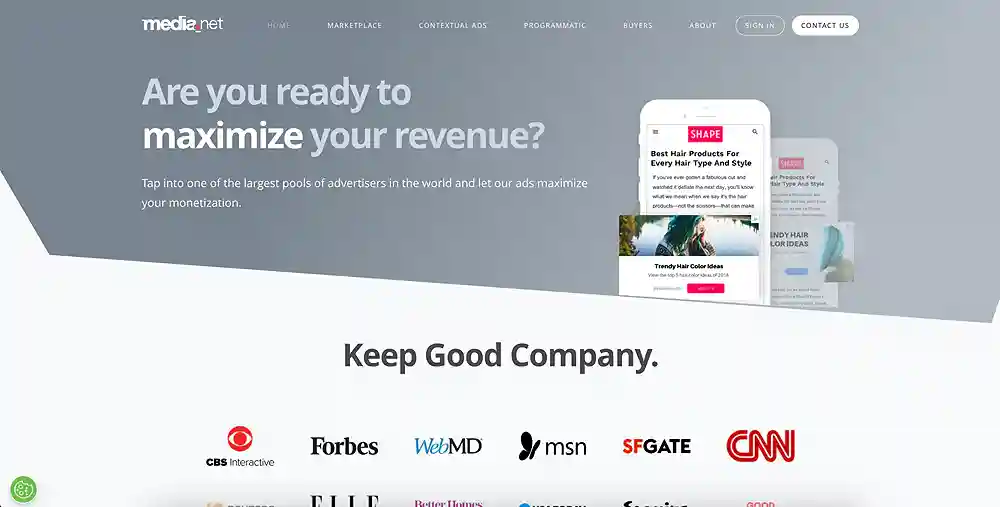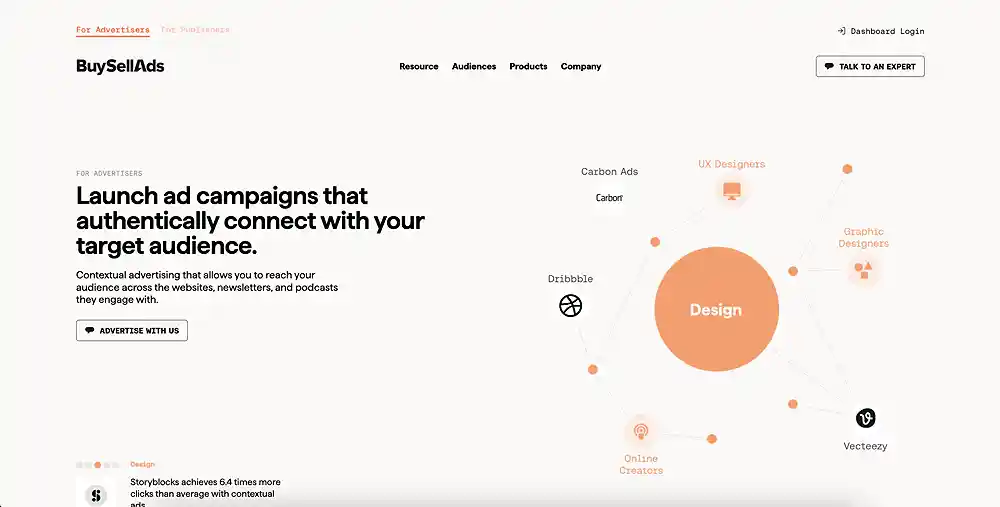So you’ve created your WordPress website and published valuable content, captivating visuals, and engaging storytelling.
But let’s face it, passion alone doesn’t pay the bills.
This is where ad networks step in, transforming your online haven into a potential revenue stream.
Ad networks are companies that connect advertisers with publishers who have space to display ads.
They act as a middleman, bringing together two sides of the online advertising equation: advertisers and publishers.
Advertisers are businesses or individuals who want to promote their products or services by paying for ad space on other websites or apps.
Publishers, on the other hand, are the website or app owners who have space available to display ads and want to earn money from them.
This could be anything from a blog to a news website to a mobile game.
With WordPress holding a staggering 43% share of the CMS market, ad networks unlock access to a vast audience for your ads.
How do ad networks work?
- Advertisers sign up with the ad network and create ad campaigns. They specify their target audience, budget, and the type of ads they want to display.
- Publishers sign up with the ad network and tell them where they have ad space available. This could be on their website, in their app, or even in their email newsletter.
- The ad network matches advertisers with publishers based on their criteria. For example, an ad network might match an advertiser who wants to target pet owners with a publisher who has a website about dogs.
- When a user visits a publisher’s website or uses their app, the ad network delivers an ad that is relevant to the user’s interests.
- The advertiser pays the ad network when someone clicks on their ad or takes another desired action, such as making a purchase. The ad network then shares a portion of the revenue with the publisher.
Popular Ad networks
1. Google AdSense

- Widely used and beginner-friendly.
- Offers various ad formats, including display, text, and link units.
- Provides targeted ads based on site content and user behavior.
2. Media.net

- A contextual ad network that powers the Yahoo! Bing Network.
- Supports display and native ad formats.
- Requires quality content and traffic for approval.
3. Raptive

- Designed for high-traffic websites.
- Offers premium ad inventory and personalized support.
- Requires a minimum of 100,000 monthly pageviews for eligibility.
4. Ezoic

- An artificial intelligence (AI) platform optimizes ad placements.
- Provides automated testing for ad configurations.
- Offers a revenue dashboard for performance insights.
5. PropellerAds

- Known for its diverse ad formats, including push notifications, native ads, and interstitials.
- Suitable for various types of websites, including blogs and news sites.
6. Infolinks

- Specializes in in-text and in-frame ads.
- Non-intrusive and compatible with Google AdSense.
- Provides a variety of ad customization options.
7. BuySellAds

- A platform connecting advertisers directly with website owners.
- Allows publishers to set their ad prices.
- Offers a marketplace where advertisers can discover and purchase ad space.
8. Amazon associates

- Ideal for affiliate marketing, especially for websites with product-focused content.
- Allows publishers to earn commissions on products sold through their affiliate links.
9. Revcontent

- Focuses on native advertising.
- Provides personalized content recommendations for users.
- Requires a higher level of traffic for approval.
10. Sovrn

- Specializes in affiliate marketing by converting existing links into revenue-generating affiliate links.
- Offers a range of affiliate programs for various niches.
11. Monumetric

- Designed for mid-sized websites with a minimum of 10,000 monthly pageviews.
- Offers various ad formats and personalized support.
12. Outbrain

- Focuses on native advertising through content recommendations.
- It helps drive engagement by suggesting related articles or content.
Guidelines for choosing the right ad network
1. Understand your audience
Identify your target audience and understand their preferences.
Different ad networks cater to different demographics and niches.
2. Define your monetization goals
Determine your primary monetization goals.
Are you looking for high CPM (Cost Per Mille), CPC (Cost Per Click), or a combination?
Some ad networks specialize in certain types of ads or payment models.
3. Consider Ad formats
Evaluate the types of ad formats offered by each network.
Common formats include display ads, text ads, native ads, video ads, and more.
Choose the ones that align with your content and user experience.
4. Check Ad quality
Opt for ad networks that prioritize high-quality and relevant ads.
Low-quality or intrusive ads can negatively impact the user experience and, consequently, your website’s reputation.
5. Assess performance tracking and reporting
Look for ad networks that provide detailed performance tracking and reporting tools.
This will help you analyze the effectiveness of your ads and make informed decisions for optimization.
6. Examine payment terms
Review the payment terms, including payout thresholds, payment methods, and payment frequency.
Ensure that the payment terms align with your preferences and financial goals.
7. Consider network reputation
Research the reputation of each ad network.
Look for reviews, testimonials, and case studies from other publishers.
A reputable ad network is more likely to provide reliable service and timely payments.
8. Evaluate targeting options
Choose an ad network that offers robust targeting options.
The ability to target specific demographics, interests, and user behaviors can improve the relevance of ads and increase engagement.
9. Check Ad load times
Page load speed is crucial for the user experience and SEO.
Test the ad network’s impact on your website’s load times and choose a network that minimally affects performance.
10. Consider responsive Ads
Ensure that the ad network supports responsive ads that adapt to different screen sizes.
This is especially important as an increasing number of users access websites on mobile devices.
11. Read and understand the Terms of Service
Carefully read and understand the terms of service of each ad network.
Some networks may have restrictions or requirements that do not align with your website’s content or policies.
12. Test multiple networks
Consider testing multiple ad networks simultaneously to compare performance.
This can help you identify which network works best for your specific audience and content.
Did you enjoy this post?
If so, please share it with your friends and followers on social media! It's a great way to help others learn about WordPress and to support our blog. You can use the share buttons below...
Elevate Your Brand with Professional Website Design
Discover how we can transform your online presence with professional website design services. We specialise in creating modern, user-friendly websites tailored for the medical, legal, university, and Christian sectors. If you're ready to elevate your brand and connect with your audience more effectively, contact us today to get started!
Tutorials on YouTube
And if you’re looking for more in-depth WordPress tutorials,be sure to subscribe to our YouTube channel! We have a wide variety of videos on WordPress.
